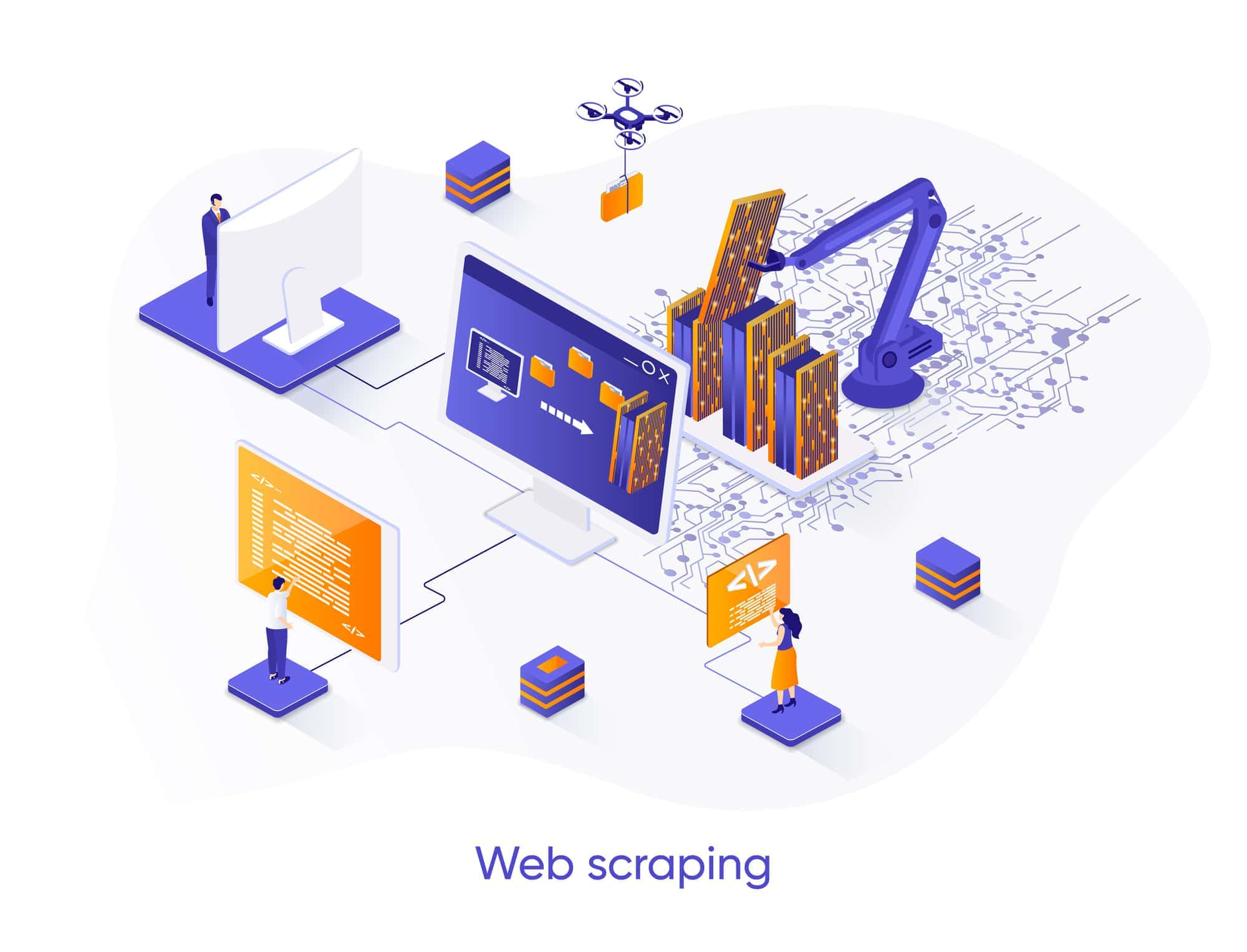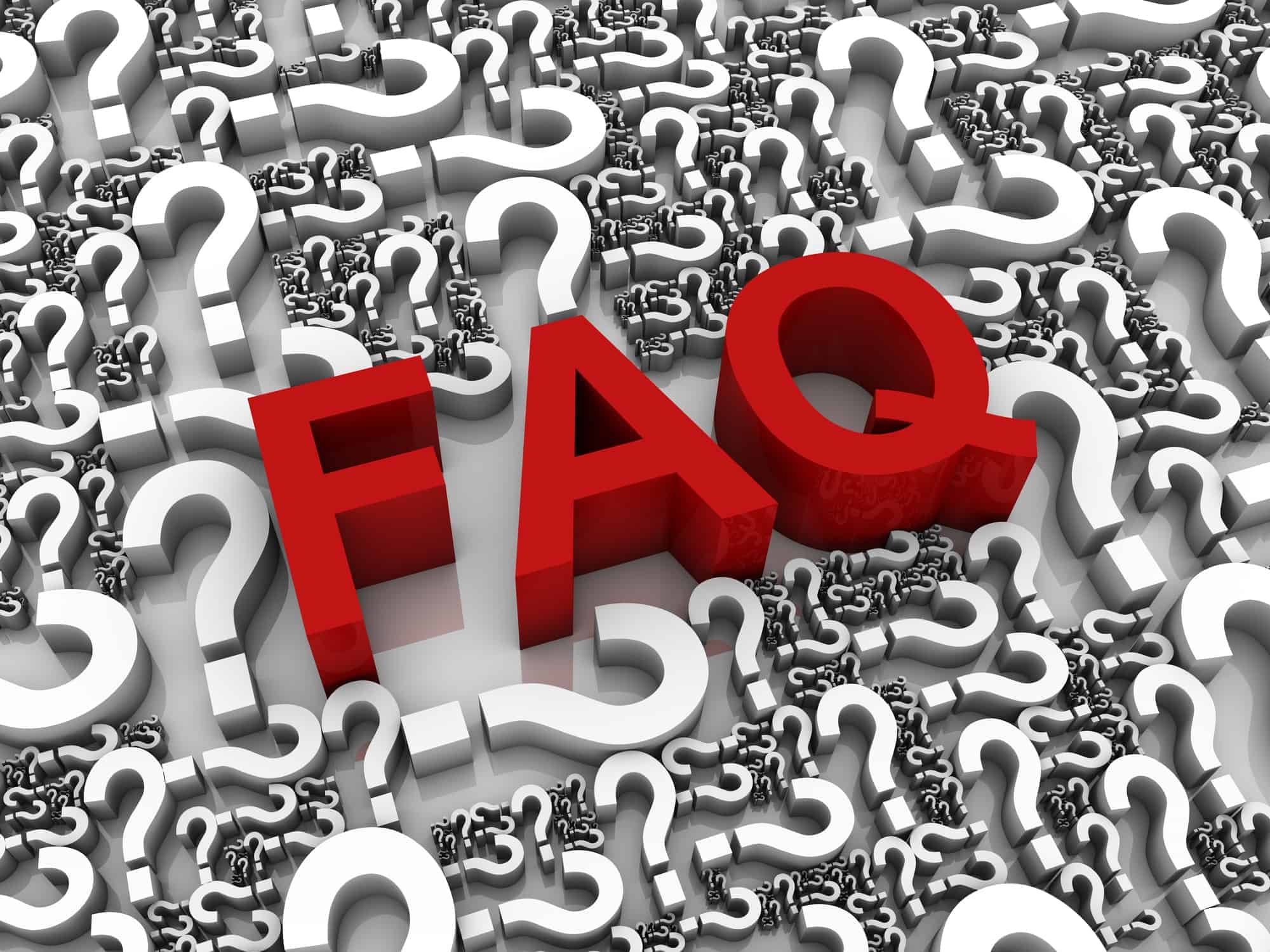Welcome to the world of web scraping with Python! If you’re starting your journey, you’ve likely heard of BeautifulSoup—a powerful tool that makes extracting information from web pages a breeze. In this section, we’ll explore the core functions of BeautifulSoup: find and findAll. These functions are the heart and soul of web scraping with BeautifulSoup, helping you navigate through the complex structures of HTML and XML effortlessly.
Step-by-Step Guide to Utilizing Find and FindAll
Let’s dive right in with a hands-on example. Suppose you want to extract the headline of a news article from a web page. The find function comes to your rescue here. It allows you to pinpoint a single element in the HTML document. Here’s a simple code snippet:
from bs4 import BeautifulSoup
import requests
url = '<https://example-news-site.com>'
page = requests.get(url)
soup = BeautifulSoup(page.content, 'html.parser')
headline = soup.find('h1').text
print("Headline:", headline)
In this example, we used soup.find('h1') to locate the first <h1> tag in the HTML, which typically contains the main headline of a page. The .text attribute then extracts just the text part of that element.
Now, what if you want to gather all the headlines or a list of links? That’s where findAll (or find_all) shines. It returns a list of all matches. Let’s modify our code to fetch all the paragraph tags:
paragraphs = soup.find_all('p')
for paragraph in paragraphs:
print(paragraph.text)
This loop prints out the text of every paragraph on the page. Notice how find_all returns a list, allowing us to iterate over each element.
Common Mistakes in Using Find/FindAll and How to Avoid Them
While find and findAll are straightforward, there are some common pitfalls you should be aware of:
- Overlooking the Return Type: Remember,
findreturns a single element, whilefindAllreturns a list. This difference is crucial when iterating over results or extracting data. - Incorrect Tag Selection: HTML structures can be complex. Ensure you’re targeting the correct tag and attributes. Tools like browser developer tools can help inspect the HTML structure.
- Handling None Values: If
finddoesn’t locate the element, it returnsNone. Always check forNonebefore performing further operations to avoid errors.
Bullet Points to Remember:
findis for single elements,findAllfor multiple.- Inspect HTML structure carefully for correct tag targeting.
- Always check for
Noneto avoid errors.
Comparative Analysis: Find vs. FindAll in BeautifulSoup

Embarking on your web scraping journey, you’ll often encounter two BeautifulSoup methods that seem similar yet have distinct purposes: find and findAll. Understanding when and how to use each is crucial for effective web scraping. Let’s break down these concepts and explore their strategic usage.
Strategic Usage: Case Studies on Find and FindAll
Imagine you’re tasked with scraping a news website. Your goal is to extract the main headline and all subheadings.
Using find for the Main Headline
The find method is perfect when you need to retrieve a single element, like the main headline. Here’s a snippet:
headline = soup.find('h1', class_='main-headline').text
print("Main Headline:", headline)
In this example, find retrieves the first <h1> tag with the specified class. It’s straightforward and efficient for singular elements.
Employing findAll for Subheadings
Now, let’s gather all subheadings:
subheadings = soup.find_all('h2')
for sub in subheadings:
print(sub.text)
Here, findAll fetches every <h2> tag, returning a list. It’s ideal for situations where multiple elements need extraction.
Optimizing Web Scraping: Performance Tips with Find and FindAll
When using find and findAll, performance is key, especially for larger-scale scraping tasks. Here are a few tips:
- Targeted Searches: Narrow down your search parameters in
find/findAllto reduce processing time. - Limiting Results: With
findAll, you can use thelimitargument to restrict the number of results, enhancing efficiency.
For example, if you only need the first five subheadings:
limited_subheadings = soup.find_all('h2', limit=5)
This code snippet fetches just the first five <h2> tags, which is a performance-friendly approach.
Advanced Usage: Regular Expressions with FindAll in BeautifulSoup
As you dive deeper into web scraping with BeautifulSoup, you’ll find regular expressions (regex) an invaluable tool. They allow for intricate patterns and matching, opening up a whole new world of data extraction possibilities. Let’s explore how to harness the power of regex with BeautifulSoup’s findAll method.
Crafting Efficient Regular Expressions for Complex Data
Regular expressions are like a secret code for matching patterns in text. They can seem daunting at first, but once you get the hang of them, they’re incredibly powerful. Here’s a basic example:
Finding Email Addresses
Suppose you want to extract all email addresses from a webpage. Emails follow a recognizable pattern, which regex can easily identify. Here’s how you do it:
import re
email_pattern = re.compile(r'\\b[A-Za-z0-9._%+-]+@[A-Za-z0-9.-]+\\.[A-Z|a-z]{2,}\\b')
emails = soup.find_all(string=email_pattern)
for email in emails:
print(email)
This regex pattern matches typical email formats. By passing this pattern to find_all, BeautifulSoup fetches all strings that look like emails.
Advanced Case Studies: Real-World Applications of Regular Expressions
Let’s dive into a more complex scenario.
Extracting Phone Numbers
Imagine you’re scraping a contact directory, and you need to extract phone numbers. Phone numbers come in various formats, but regex can handle them. Here’s an example:
phone_pattern = re.compile(r'\\(?\\d{3}\\)?[-.\\s]?\\d{3}[-.\\s]?\\d{4}')
phones = soup.find_all(string=phone_pattern)
for phone in phones:
print(phone)
This pattern matches several phone number formats (like 123-456-7890, (123) 456-7890, etc.). By using regex, you ensure you don’t miss any format.
Text Extraction Masterclass: Beyond FindAll in BeautifulSoup
Navigating through the world of web scraping, you’ll soon discover that extracting text from HTML elements is a fundamental skill. BeautifulSoup’s get_text() method is a powerful tool for this purpose. Let’s dive into the best practices for using get_text() and troubleshooting common text extraction challenges.
Best Practices for Using Get_Text in BeautifulSoup
Extracting Text without the HTML Tags
Often, you’ll want to scrape text content without any accompanying HTML tags. Here’s how you can achieve this:
paragraph = soup.find('p').get_text()
print(paragraph)
This code snippet fetches the text of the first paragraph tag, stripping away the HTML. Simple, right?
Keeping or Excluding Specific Elements
What if you want to maintain the line breaks or exclude certain elements like scripts or styles? BeautifulSoup’s get_text() is flexible. Consider this:
text = soup.get_text(separator=u' ', strip=True)
print(text)
The separator parameter helps maintain the readability of the text, while strip removes leading and trailing spaces.
Troubleshooting Guide for Text Extraction Challenges
Even with the right tools, you might encounter some hurdles in text extraction. Let’s address a couple of common issues:
- Dealing with Nested Tags: Sometimes, text is nested within multiple layers of tags. It’s crucial to navigate the HTML tree accurately. Using BeautifulSoup’s navigation options, like
descendantsorchildren, can help. - Handling Inconsistent HTML Structures: Websites often have inconsistent HTML structures. Writing flexible code that can handle these variations is key. Utilize BeautifulSoup’s ability to search by both tags and attributes to your advantage.
Integrating BeautifulSoup with Python Web Frameworks
When you’ve got a good grasp on BeautifulSoup, it’s time to level up your skills by integrating it with Python web frameworks like Flask and Django, and even exploring asynchronous web scraping. This integration can supercharge your web applications with dynamic data extraction capabilities.
Implementing BeautifulSoup in Flask and Django Projects
Flask, known for its simplicity and flexibility, works wonderfully with BeautifulSoup for smaller projects or microservices. Here’s a basic example:
from flask import Flask, render_template
from bs4 import BeautifulSoup
import requests
app = Flask(__name__)
@app.route('/')
def home():
page = requests.get("<https://example.com>")
soup = BeautifulSoup(page.content, 'html.parser')
headline = soup.find('h1').text
return render_template('index.html', headline=headline)
if __name__ == '__main__':
app.run()
In this Flask app, BeautifulSoup is used to scrape a headline from a webpage and display it on the homepage of the app.
Django Integration
Integrating BeautifulSoup with Django, a high-level Python web framework, follows a similar approach but is more suited for larger projects with complex data models.
# In a Django view
from django.shortcuts import render
from bs4 import BeautifulSoup
import requests
def show_headline(request):
page = requests.get("<https://example.com>")
soup = BeautifulSoup(page.content, 'html.parser')
headline = soup.find('h1').text
return render(request, 'headline.html', {'headline': headline})
Here, we’re scraping a headline and passing it to a Django template.
Asynchronous Web Scraping: Combining BeautifulSoup with AsyncIO
Asynchronous programming in Python, particularly using AsyncIO, is a game-changer for web scraping tasks. It allows for concurrent processing, making scraping faster and more efficient.
Basic AsyncIO Integration with BeautifulSoup
import asyncio
import aiohttp
from bs4 import BeautifulSoup
async def fetch_page(session, url):
async with session.get(url) as response:
return await response.text()
async def scrape_headline(url):
async with aiohttp.ClientSession() as session:
html = await fetch_page(session, url)
soup = BeautifulSoup(html, 'html.parser')
return soup.find('h1').text
url = "<https://example.com>"
headline = asyncio.run(scrape_headline(url))
print(headline)
In this example, aiohttp is used alongside AsyncIO to fetch web pages asynchronously, and BeautifulSoup is then used to parse and scrape data from these pages.
Future of Web Scraping: Evolving with BeautifulSoup

As we continue our exploration of web scraping, it’s essential to look forward and anticipate the evolution of tools like BeautifulSoup. The field of web scraping is dynamic, with continuous advancements in technology and methodology. Let’s peek into what the future holds for BeautifulSoup and how to adapt our scraping techniques to keep pace with modern web technologies.
Anticipating New Features in BeautifulSoup
The development of BeautifulSoup is ongoing, with a focus on enhancing its capabilities to handle the increasingly complex web. Here are some anticipated developments:
- Improved JavaScript Handling: As websites become more dynamic, BeautifulSoup might integrate better ways of handling JavaScript-generated content, making scraping more efficient.
- Enhanced Performance: Future versions could offer optimized parsing algorithms for quicker data extraction, especially beneficial for large-scale scraping projects.
Staying Updated
To stay ahead, keep an eye on the official BeautifulSoup documentation and community forums. They are your best sources for the latest updates and features.
Adapting Scraping Techniques for Modern Web Technologies
Modern websites often rely heavily on JavaScript to load content dynamically. While BeautifulSoup is great for parsing HTML, it doesn’t execute JavaScript. Here’s where integrating tools like Selenium or requests-html can be useful:
from selenium import webdriver
from bs4 import BeautifulSoup
driver = webdriver.Chrome()
driver.get("<https://example.com>")
html = driver.page_source
soup = BeautifulSoup(html, 'html.parser')
# Now you can use BeautifulSoup as usual
This snippet shows how you can use Selenium to render JavaScript and then pass the page source to BeautifulSoup.
Handling API Driven Websites
Many modern websites load data via APIs. In such cases, directly accessing the API can be more efficient than traditional scraping methods:
import requests
from bs4 import BeautifulSoup
response = requests.get("<https://example.com/api/data>")
data = response.json() # Assuming the data is in JSON format
# Process your data here
By directly fetching data from the API, you bypass the need for parsing HTML, streamlining the process.
Advanced BeautifulSoup Techniques for Efficient Web Scraping
As you progress in your web scraping journey, leveraging advanced techniques with BeautifulSoup becomes crucial for handling complex tasks efficiently. Integrating it with other Python libraries and developing strategies for dynamic web content are key steps in this advancement. Let’s explore these sophisticated methods to elevate your scraping skills.
Leveraging BeautifulSoup with Other Python Libraries
One powerful combination is using BeautifulSoup with Pandas, the go-to library for data analysis in Python. This integration allows you to scrape data and immediately transform it into a Pandas DataFrame for analysis. Here’s a quick example:
import pandas as pd
from bs4 import BeautifulSoup
import requests
url = "<https://example.com/tabledata>"
page = requests.get(url)
soup = BeautifulSoup(page.content, 'html.parser')
table = soup.find('table')
df = pd.read_html(str(table))[0]
print(df.head())
In this example, we scrape a table from a webpage and convert it into a DataFrame. Pandas’ read_html function is incredibly efficient for this purpose.
Pairing with Requests for Advanced HTTP Handling
While BeautifulSoup excels at parsing HTML, it doesn’t handle HTTP requests. Pairing it with the requests library gives you more control over your scraping:
response = requests.get(url, headers={'User-Agent': 'Your User Agent'})
soup = BeautifulSoup(response.content, 'html.parser')
# Now use BeautifulSoup as usual
By customizing the headers, you can mimic a real browser, which helps in scraping sites that block typical scraping attempts.
Techniques for Handling Dynamic Web Content
Dealing with JavaScript-loaded content can be challenging, as BeautifulSoup doesn’t execute JavaScript. In such cases, integrating tools like Selenium or Scrapy can be a game-changer:
from selenium import webdriver
from bs4 import BeautifulSoup
driver = webdriver.Chrome()
driver.get("<https://example.com/dynamiccontent>")
html = driver.page_source
soup = BeautifulSoup(html, 'html.parser')
# Now scrape the dynamically loaded content
In this code snippet, Selenium renders the JavaScript and then passes the HTML to BeautifulSoup for scraping.
Handling Infinite Scroll and Pagination
For sites with infinite scroll or pagination, a looped request mechanism is necessary:
for page_num in range(1, 5): # Adjust the range as needed
url = f"<https://example.com/page/{page_num}>"
page = requests.get(url)
soup = BeautifulSoup(page.content, 'html.parser')
# Process each page here
This approach allows you to scrape multiple pages efficiently.
Interactive Learning: Frequently Asked Questions About BeautifulSoup

Navigating the world of web scraping can be overwhelming, especially when you’re new to tools like BeautifulSoup. That’s why a good old Q&A session can be incredibly helpful! Let’s address some frequently asked questions about BeautifulSoup, offering expert answers to common queries, and guiding you towards additional resources and community forums.
Expert Answers to Common Queries
Q1: How do I handle a NoneType error when using BeautifulSoup?
Ah, the infamous NoneType error! This usually happens when you try to access an attribute of an element that BeautifulSoup couldn’t find. Here’s a quick fix:
element = soup.find('tag')
if element:
print(element.text)
else:
print("Element not found!")
This code checks if the element is found before trying to access its text attribute.
Q2: Can BeautifulSoup handle AJAX loaded content?
By itself, no. BeautifulSoup parses static HTML content. For AJAX or JavaScript-loaded content, you’ll need to use tools like Selenium or Requests-HTML that can execute JavaScript. Once the content is loaded, you can parse it with BeautifulSoup.
Q3: What is the best way to extract all links from a webpage with BeautifulSoup?
Extracting links is a breeze with BeautifulSoup. Here’s a simple way to do it:
links = [a['href'] for a in soup.find_all('a', href=True)]
for link in links:
print(link)
This code finds all <a> tags with an href attribute and prints out the links.
Additional Resources and Community Forums for BeautifulSoup
While our Q&A covers the basics, there’s so much more to learn. Here are some resources to further your BeautifulSoup journey:
- Official Documentation: Start with BeautifulSoup’s official documentation. It’s comprehensive and a great place to understand the fundamentals.
- Stack Overflow: A treasure trove of solutions. Search for your query related to BeautifulSoup, and chances are, someone has already answered it.
- GitHub Repositories: Look for open-source projects that use BeautifulSoup. Reading and understanding real code is a fantastic learning method.
- Reddit and Python Forums: Platforms like Reddit have active communities where you can ask questions and share insights.
Conclusion and Further Exploration in Web Scraping with BeautifulSoup
As we draw this segment to a close, let’s reflect on the journey through the world of web scraping with BeautifulSoup. The field is ever-evolving, with new challenges and opportunities emerging regularly. Keeping up-to-date and constantly honing your skills is crucial in this dynamic landscape. Let’s look at how you can stay updated and challenge yourself with new projects.
Staying Updated with BeautifulSoup’s Evolving Landscape
The key to mastery in web scraping is continual learning. Here’s how you can stay ahead:
- Follow the Official BeautifulSoup Documentation: Regularly check for updates, as new features and improvements are always in the pipeline.
- Participate in Online Communities: Join forums like Stack Overflow, Reddit’s r/learnpython, or specific BeautifulSoup communities. Sharing knowledge and solving problems together keeps you sharp.
- Experiment with New Releases: When new versions are released, play around with them. Experimentation is a great way to learn.
Project Ideas and Challenges to Enhance Your Scraping Skills
Here are some project ideas to challenge yourself:
- Build a Price Tracker: Create a script that tracks the prices of your favorite products online and sends you alerts when they drop.
- Develop a Content Aggregator: Gather articles or posts from various sources and compile them into a single feed.
- Create a Weather Data Scraper: Write a program that scrapes weather forecasts from websites and presents them in an easy-to-read format.
Example Code: Weather Data Scraper
import requests
from bs4 import BeautifulSoup
url = '<https://example-weather-site.com>'
page = requests.get(url)
soup = BeautifulSoup(page.content, 'html.parser')
forecast = soup.find('div', class_='weather-forecast')
print("Today's Weather Forecast:", forecast.text.strip())
This code fetches the weather forecast from a webpage and prints it out. It’s a simple yet effective way to begin exploring data scraping from dynamic websites.
Wrapping Up:
- Stay curious and keep learning about the latest in BeautifulSoup.
- Engage with the community to share knowledge and get inspired.
- Challenge yourself with new projects to sharpen your skills.
This journey through BeautifulSoup has been exhilarating, filled with learning and discoveries. Remember, the path to becoming proficient in web scraping is through practice, experimentation, and community engagement. Keep exploring, and let your curiosity lead the way to new scraping adventures!

